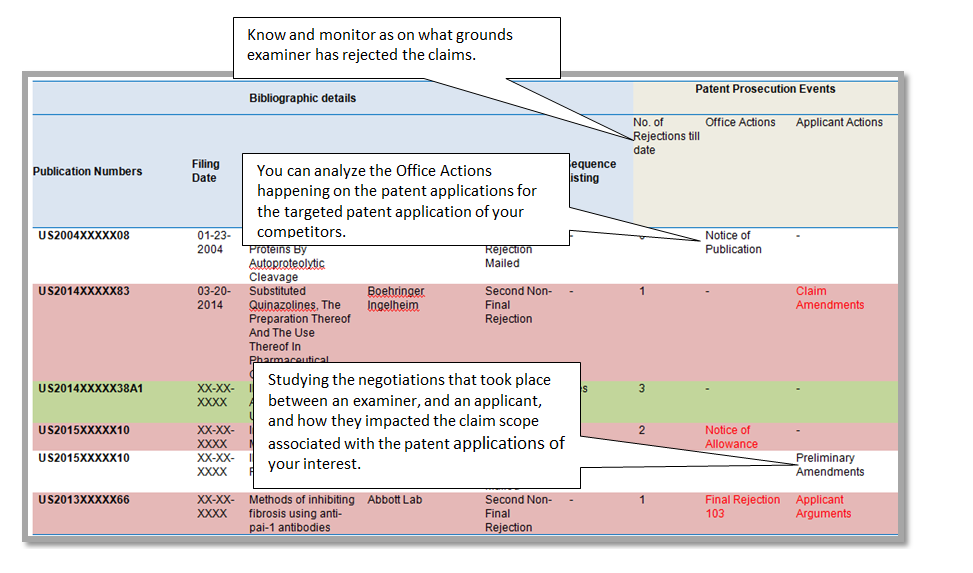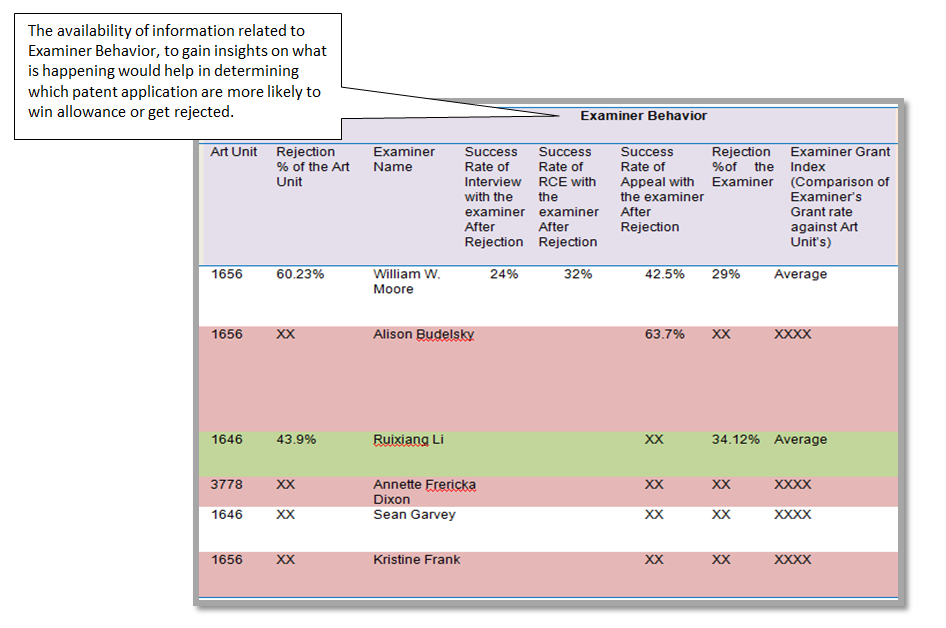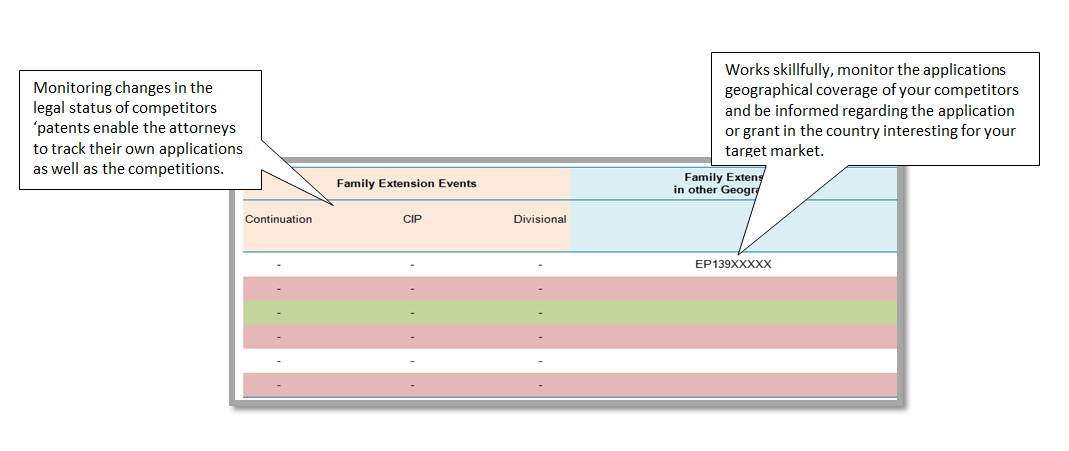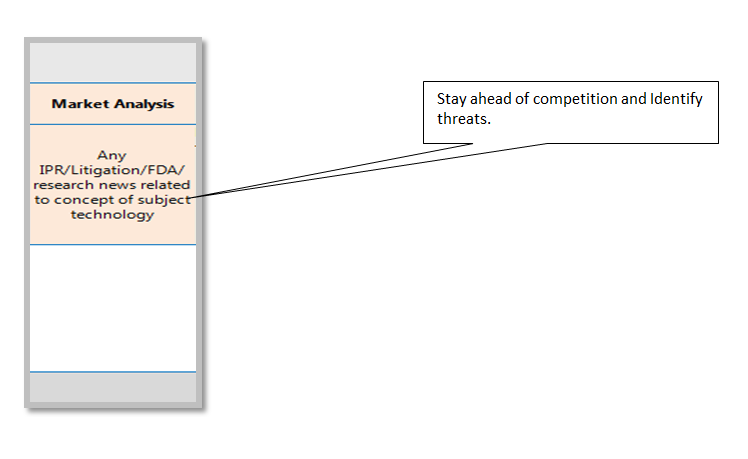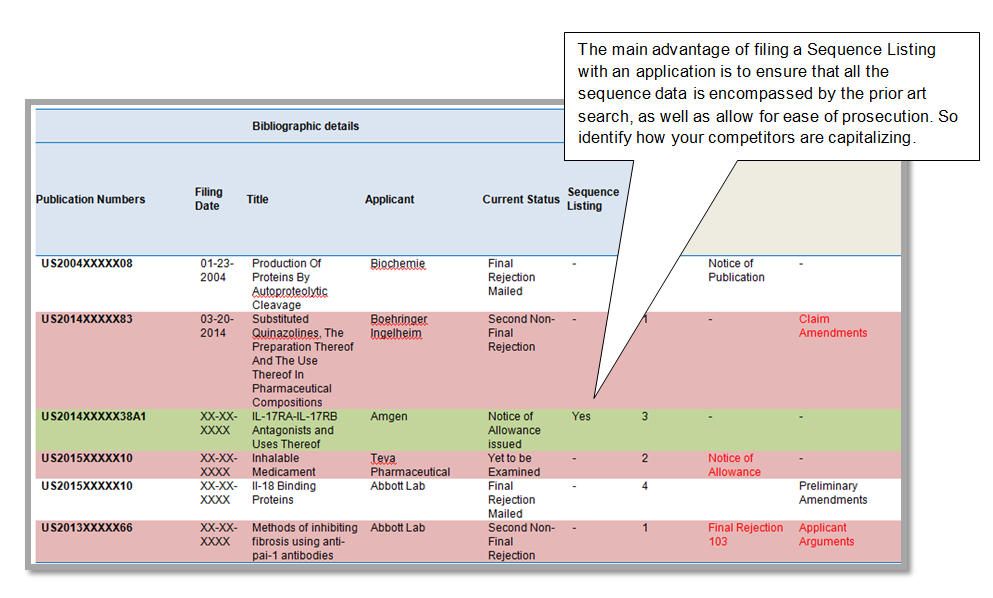How Patent Monitoring Report Can Help In Holistic Competitor Intelligence?
How far have your closest competitors come? What patents? In what countries are they valid, and for how long? Or, more specifically: What has happened in your particular technological area during the last six months?
Competitive intelligence is an essential strategy, especially when it comes to monitoring a competitor’s patent portfolio. Obviously, you know your competitors. But do you really know them all? Identical technologies are often used in different products. How good is the technology of your company in comparison to the competition? Which patent strategies are pursued by your competition? The simple answers to these complex questions could be provided by a targeted “Patent monitoring report.”
Below, we have elaborated on the elements you can add to a “Patent Monitoring Report.” We have also provided a link to a free template at the bottom of this post.
Such a report can help you gauge one, futuristic IP trend critical for you, and two, keeping a competitive watch in a comprehensive manner. Also, it will make the activities of competitors visible instantly and will keep you updated on the new applications filed by the competitors in the domain of your interest.
 You can generate such a customized report and can update it:
You can generate such a customized report and can update it:
- Weekly
- Bi-weekly
- Monthly
- Or in a Specified duration
The image below is an example of a weekly report. You can use different color variations to highlight the critical actions that happened during a specific time. In the current example, the red color indicates the important events that happened during the week. The green color represents that a competitor has taken no new action during the week.
The Various Elements of a Patent Monitoring Report
Patent Prosecution Events
This represents the various interactions between applicants and their representatives and a patent office with regard to a patent or an application for a patent. All of these events are being taken from the United States Patent and trademark office.
- No. of Rejections to date represents the number of 101,102,103 or 112 rejections that have taken place to date.
- Office Actions represent the examiner’s actions in response to a patent application after the examiner has examined the application. The office actions can be new prior art cited, non-final rejection, final rejection, terminal disclaimer, a notice of allowance, etc.
- Applicant Actions represent the various responses from an applicant for the prosecution of an application to continue. Applicant actions can be Applicant arguments for Non-final/Final rejections, requests for continued examination (RCE), Claim amendments, preliminary amendments, etc.
Examiner Behavior
This represents some value-added information from our proprietary Examiner Analysis tool. Each report highlights circumstances specifically related to the examiner of the targeted application, enabling you to see how that examiner previously handled similar patent applications. Discovering data related to RCE turnaround time, allowance rates, and appeal process outcomes helps to understand and predict the arbitration behavior of an examiner and his rate of rejection. You will know beforehand which patent applications of your competitors are going to get rejected and which
Discovering data related to RCE turnaround time, allowance rates, and appeal process outcomes helps to understand and predict the arbitration behavior of an examiner and his rate of rejection. You will know beforehand which patent applications of your competitors will get rejected and which will get an allowance. This will help you prepare for a counter-attack.
Family Extension Events
This represents the events when different child application corresponding to the particular patent has been filed.
Continuity data: tells you if a patent of interest is a continuation application or the parent of a continuation application.
Family Extension in Other Geographies
This represents the events when different from the particular application has been filed in other countries.
Market Analysis
- IPR/PTAB Decisions: Our report will include comprehensive data related to interference/Post-Grant and Inter partes review as they occur at the Patent Trial and Appeal Board. Keeping track of these trials and appeals will give you an opportunity to stay on top of what is happening around the application/patent of your interest.
- Litigations: Your competitor monitoring effort does not end at the prosecution stage or even after a patent is issued. A constant watch at this point helps you to proactively monitor if the patent of your interest is litigated as well as to gauge the filing trends, patterns of case outcomes, plaintiffs and defendants, etc. This is not only to understand current affairs but also to be prepared to handle future threats.
Additional Information (for applications containing disclosures of nucleotide and/or amino acid)
Sequence Listing
It refers to the listing of the nucleotide sequence corresponding to the applications containing disclosures of nucleotide and/or amino acid sequences that fall within the definitions of 37 CFR 1.821(a). They contain, as a separate part of the disclosure, details of the nucleotide and/or amino acid sequences and associated information.
Although a Sequence Listing is required when requested by an examiner, submitting a Sequence Listing prior to such a communication almost always streamlines patent prosecution.
Conclusion
Only competitor data collection and analysis can’t help you in competitor intelligence monitoring. A patent lifecycle has different stages with its own opportunities and threats. Further, selecting which stage to monitor and, more importantly, how to monitor these stages become imperative for the success of a business.
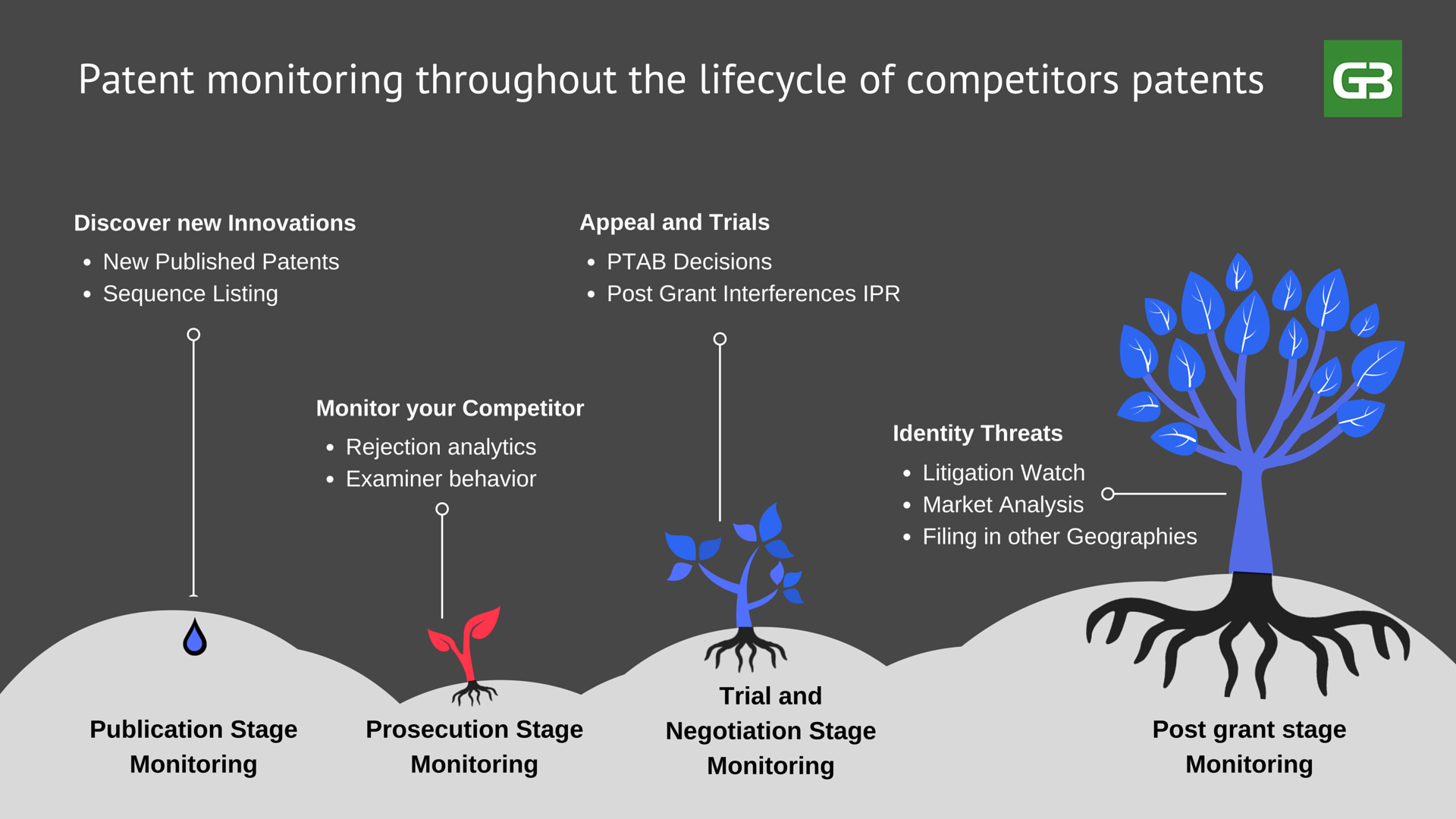
A targeted patent monitoring report helps in a meticulous analysis of these stages. It not only improves competitor monitoring but also helps in strategic patent filings.
This article is inspired by “GreyB’s Patent Monitoring Report,” which we have designed in a way that gives our clients a holistic view of all the stages of a patent lifecycle viz: publication stage, prosecution stage, negotiation stage, and post-grant stage.
Feel free to fill out the below form to get the competitive intelligence report template:

Authored By: Geetika Dube, Project Manager.



